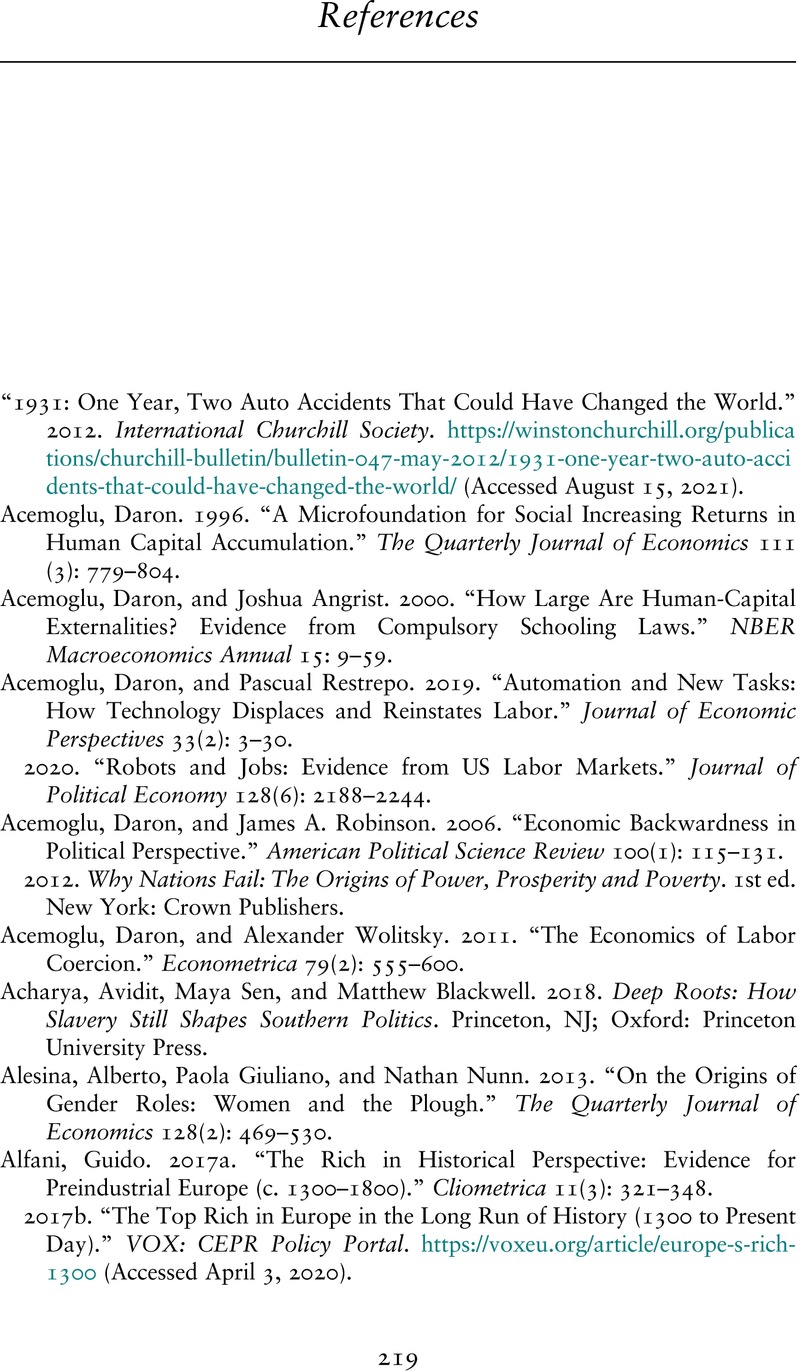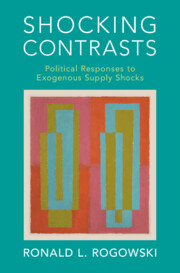Book contents
- Shocking Contrasts
- Political Economy of Institutions and Decisions
- Shocking Contrasts
- Copyright page
- Dedication
- Epigraph
- Contents
- Figures
- Maps
- Tables
- Preface and Acknowledgments
- Introduction
- 1 How Supply Shocks Arise and Why Political Responses to Them Vary
- 2 Who Adjusts to a Supply Shock and Who Resists It
- 3 Why a Technological Solution Does, or Does Not, Emerge
- 4 Exogenous Loss of Labor
- 5 Exogenous Gain of Labor: Railroads, Reproduction, and Revolution
- 6 Exogenous Loss of Land
- 7 Exogenous Increase of Human Capital
- 8 When the Endogenous Becomes Exogenous
- 9 Conclusion
- References
- Index
- Other books in the series (continued from page iii)
- References
References
Published online by Cambridge University Press: 09 June 2023
- Shocking Contrasts
- Political Economy of Institutions and Decisions
- Shocking Contrasts
- Copyright page
- Dedication
- Epigraph
- Contents
- Figures
- Maps
- Tables
- Preface and Acknowledgments
- Introduction
- 1 How Supply Shocks Arise and Why Political Responses to Them Vary
- 2 Who Adjusts to a Supply Shock and Who Resists It
- 3 Why a Technological Solution Does, or Does Not, Emerge
- 4 Exogenous Loss of Labor
- 5 Exogenous Gain of Labor: Railroads, Reproduction, and Revolution
- 6 Exogenous Loss of Land
- 7 Exogenous Increase of Human Capital
- 8 When the Endogenous Becomes Exogenous
- 9 Conclusion
- References
- Index
- Other books in the series (continued from page iii)
- References
Summary

- Type
- Chapter
- Information
- Shocking ContrastsPolitical Responses to Exogenous Supply Shocks, pp. 219 - 236Publisher: Cambridge University PressPrint publication year: 2023



